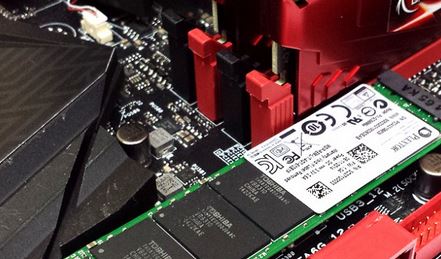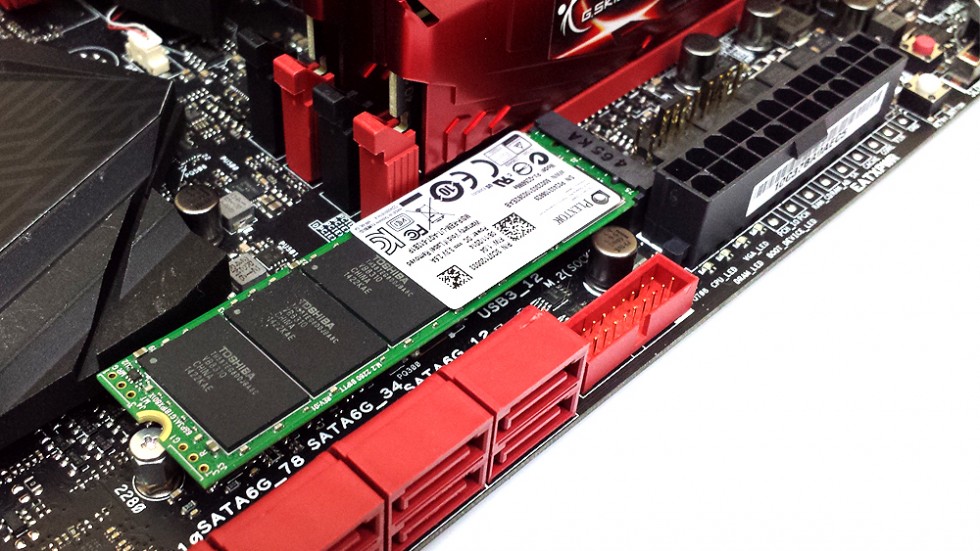
This article was written by Scott Roy Smith and was originally published on HardBoiled.
Computer expansion cards continue to shrink and solid state drives (SSDs) are taking the lead with the M.2 SSD form factor. No longer relegated to simply being mounted in drive bays or large expansion slots, SSDs and other add-in cards continue the trend of smaller is better.
The M.2 specification is not only used for SSDs, but also for Wi-Fi, Bluetooth®, NFC, and other internally-mounted cards. The interfaces available include USB 3.0 (backward compatible to USB 2.0), SATA 3.0, and NVMe.
The availability of NVMe on M.2 is a boon to SSDs since SATA (6 Gbps) has proven to be an impediment to full SSD performance. The NVMe driver uses up to four PCI Express lanes for potential data transfers at much higher speeds than SATA can practically achieve due to being interfaced through older AHCI technology that was designed for the slower spinning media of traditional hard drives.
The M.2 design was specifically aimed at SSDs and future memory technologies to overcome the bottleneck of the older technology while shrinking the form factor. PCI Express 3.0 with 4 lanes will achieve 32 Gbps transfer rates, which should satisfy SSD needs for the next few years of advancements.
Be Aware of Certain M.2 Specifications
Purchasing M.2 cards requires attention to some details, however. They come with key notches in the connector according to the type of modules the host computer will accept. The key notches are identified with letters A through M, which indicate their position on the connector and the respective interfaces provided. For example a notch at position M indicates that up to 4 PCI Express lanes can be used with NVMe or a SATA storage device can be supported.
M.2 SSD cards also come in various sizes. While the most common width so far has been 22 mm, 12, 16, and 30 mm may also be available. The length can vary from 16 to 110 mm (lengths: 16, 26, 30, 38, 42, 60, 80, 110) . A single screw is typically used to fasten the card at the end opposite the connector to keep it securely in place.
The M.2 specification also stipulates the maximum thickness of components on one or both sides of the board. The maximum on both top and bottom is only 1.5 mm each, so these cards are quite thin.
The connectors for these cards are not only showing up in laptops and similar portable computers. PC motherboards are also sporting them. Although the original thinking was that they are primarily for power-constrained devices, some IT professionals may be considering using these M.2 devices mounted on the server motherboards as an alternative to the larger SSDs they may currently be using as boot drives.
Many of the benefits of M.2 SSDs obviously spring from their small size. It is quite convenient to be able to slip them into a slot on the motherboard in a small case and not have to deal with SATA and power cable routing. The smaller size and faster transfers may well lead M.2 SSDs to a larger role in server and desktop computers besides mobile device applications.

